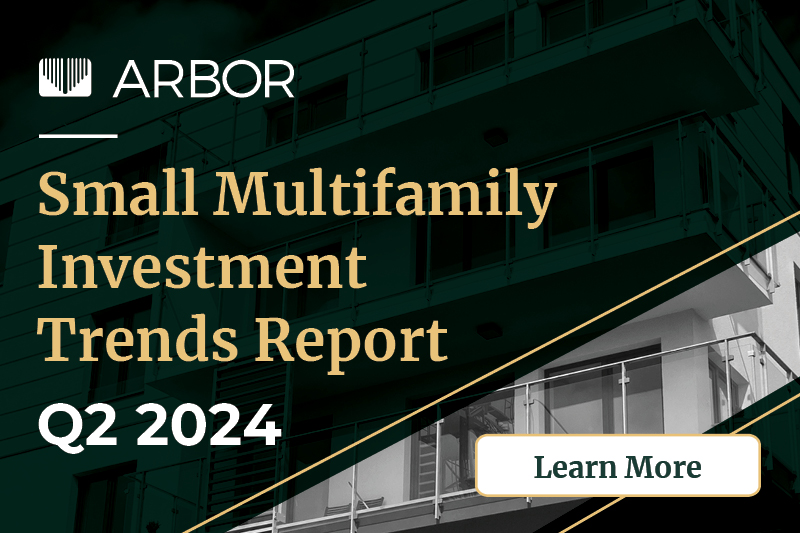Even with the market in flux, opportunities continue emerging for well-positioned investors. Historically, some of the best multifamily deals were closed in down cycles or during the upswing to normalcy. Arbor’s Special Report Fall 2024 details why the current economic climate is ripe for investment.
Arbor Sponsors Smile Farms Golf Outing Supporting Local Employment Opportunities

Arbor, which takes pride in helping employees reach their full potential, was honored to sponsor and participate in Smile Farms’ 10th Anniversary Golf Outing on May 20 at the Plandome Country Club on Long Island, NY, benefiting the Long Island-based organization dedicated to advancing opportunities for people with disabilities.

New York State’s 2025 Budget Advances Affordable Housing Goals

In April, New York State Governor Kathy Hochul announced a landmark budget agreement heralded as a giant step for affordable housing. New York’s FY 2025 Enacted Budget includes several key policy changes that could create thousands of affordable housing units across the state.

SFR East 2024: How Economics and Demographics Shape the Rental Market

IMN’s Single Family Rental Forum (East), the cornerstone gathering of the SFR industry, concluded on May 22, 2024, in Miami, FL. Over three days, 1,800 attendees listened to more than 280 speakers discuss all angles of the SFR industry. On the first day of the conference, Arbor’s Tres Seippel, Director, Construction Management, participated in a wide-ranging panel discussion examining economic and demographic forces influencing SFR and build-to-rent (BTR), which also featured Rick Dalton, President of the Dalton Group, Domonic Purviance of the Federal Reserve Bank of Atlanta, Wade McGuinn, CEO of McGuinn Hybrid Homes, and Heather Williams, VP at Willow Bridge Property Company.

Affordable Housing Market Snapshot — May 2024

As housing costs spiral, rental affordability has become a more urgent issue, burdening a greater number of Americans. With more funding on the way, policymakers and private market advocates are pressing ahead with plans to add units to an increasingly tight housing market.

Top U.S. Multifamily Rent Growth Markets — Q1 2024

The U.S. multifamily market remained strong to start 2024. Now that pandemic-related migration trends have settled, a diverse group of markets has risen to the top of the rent growth list.

The Probability Renters Will Keep Renting Hits Record High

The average renter thinks there is a three-in-five chance they will still be in the rental market in 2027, according to the New York Federal Reserve’s recently released 2024 SCE Housing Survey. Compared to last year, the probability of the average renter not becoming a homeowner in the next three years was up 4.3 percentage points, reaching its highest mark since the study began in 2015.

Small Multifamily Investment Trends Report Q2 2024

Small multifamily’s performance continues to conform to pre-pandemic norms typically seen before the historic boom years of 2021 and 2022. In the first quarter of 2024, cap rates and asset prices both improved quarter-over-quarter, Arbor’s Small Multifamily Investment Trends Report Q2 2024, developed in partnership with Chandan Economics, has found. The subsector’s fundamental strength will support steady growth amid tight credit conditions until interest rate relief invites increased investment activity.

U.S. Multifamily Market Snapshot — May 2024

Key fundamentals of the U.S. multifamily remained strong to start 2024. Despite fears of oversupply, rent growth remained stable and vacancy rates remained near historical lows.

Arbor Marketing Campaign Wins Two Awards at Industry Gala

For more than 30 years, Arbor has been committed to building strong bonds with clients that lead to mutual success. This philosophy is at the heart of a unique Arbor marketing campaign, The Art of Growing Financial Partnerships, which received two awards at the 30th Annual Financial Communications Society (FCS) Portfolio Awards Gala in New York City on May 2. The campaign, which was featured in two private jet terminals, used original stained-glass pieces to build brand awareness among high-net-worth travelers.

Top SFR Annual Rent Growth Markets

Even as rents retreated elsewhere, single-family rentals (SFR) have continued to outperform all other housing sub-types, exceeding the all-property type national average in 17 consecutive months through February 2024, according to Zillow’s Observed Rent Index (ZORI). Annual SFR rent growth has seen substantial gains in many metropolitan areas since national rent growth peaked in March 2022. In this deep dive, the Chandan Economics and Arbor Realty Trust research teams pinpoint the metropolitan areas where SFR rents are rising the fastest.


